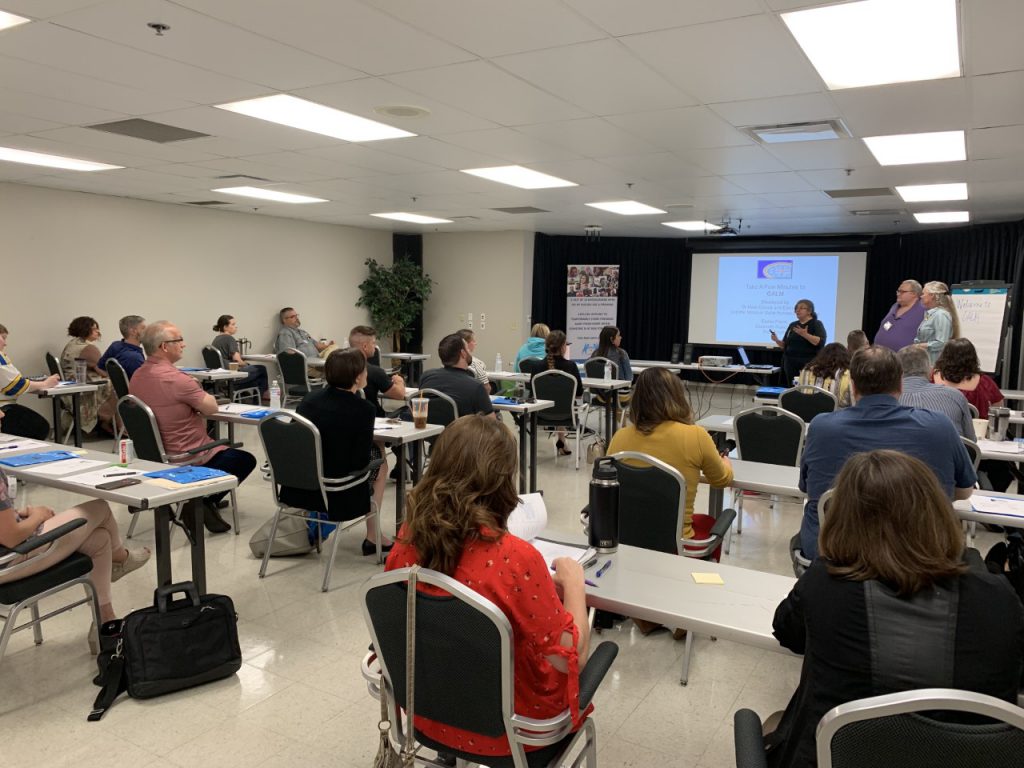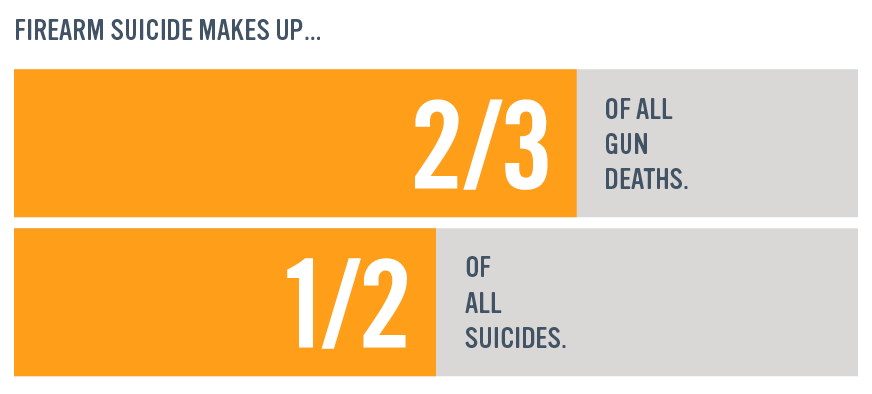By: Katie Ellison, Project Director, Safer Homes Collaborative, Missouri Institute of Mental Health – University of Missouri-St. Louis (The Safer Homes Collaborative is a joint initiative between the gun-owning and suicide prevention communities to promote lethal means reduction to prevent suicide)
This blog is part of a special series by the Harris Institute’s Gun Violence and Human Rights Initiative and the Institute for Public Health’s Gun Violence Initiative in recognition of National Gun Violence Awareness Month, launched on June 5th for Gun Violence Awareness Day. Throughout this series we will highlight the work being done on this critical issue across campus, the St. Louis region, and the country.
On a crisp September day in 1998, after years of struggle and denial about my status as a person living with a mental health condition, I succumbed to the taunting voice that had been filling my thoughts with self-hatred and messages that my life was worthless. In a warped attempt to prove to the mocking voice in my head that I wasn’t too gutless to end my life, I, like many people who attempt suicide, used what I had available to me in my home in an attempt to end my life. Thankfully, I did not have a gun nor access to someone else’s gun that day. I most likely would not be alive today and working to save others from that same despair I had.
In many public health and gun violence initiatives across the U.S., gun suicide is often overlooked. Attention is rightfully given to the tragedy of interpersonal gun violence and accidental injuries. Yet gun suicide, as a part of the gun violence continuum, is not equally addressed. Americans are more likely to die by a gun in their own hand than a gun in the hand of someone else, by a margin of two out of three. Of the 39,740 gun deaths in 2018, over 60% (24, 432) were due to suicide. For comparison, one in three gun deaths were homicide and one in 100 were accidental.
Mental illness does not discriminate based on the gender, the color of your skin, socioeconomic status, religious affiliation, or even gun-ownership. Gun-owners are no more likely to have a mental health condition, a common precursor to suicide, than a non-gun-owner. However, gun-owners are at increased risk of dying in a suicide attempt simply because of the ease of access and increased lethality of a firearm, in comparison to other methods of suicide.
Dr. Michael Anestis, a leading researcher in suicidology at the University of Southern Mississippi wrote in his book Guns and Suicide: An American Epidemic: “Guns don’t make people suicidal. Guns make suicidal people more likely to die.” Research has demonstrated that having access to a gun in the home is associated with a five-fold increase in suicide, compared to those who live in a home without a gun. In fact, 80 to 90 percent of people who use a gun in a suicide attempt will die because of the extreme lethality of a gun and the minimal opportunity for intervention and rescue after such an attempt. To understand just how high a lethality rate that is, compare it to the lethality rates of 1.5% for drug/poison ingestion (1.5%) or jumping (34.5%).
The good news is that many interventions to prevent gun suicide do not require legislation. Voluntary and temporary interventions reduce access to guns and other means of suicide. The safest option for a person who is at risk for suicide is to limit their access to anything that could be used in a suicide attempt. While it is not possible to eliminate all implements for suicide, limiting access to the most lethal and the most commonly used methods could save a life and is considered best practice.

Call to Action
Asking another legal gun owner to hold onto another’s gun(s) while a person is at risk for suicide puts space and time between the at-risk person and the most lethal method. Depending on your jurisdiction, there may be laws that mitigate how the transfer of firearms take place. In Missouri, there are no statutes nor limitations on the voluntary or temporary transfer of a gun to someone who can legally possess a firearm. Ask a trusted friend to hold on to the gun(s) until the situation improves. If a trusted friend or family member is unable to accept temporary and voluntary responsibility for the gun(s), consider off-site storage options such as a gun locker at a gun retailer, self-storage companies that offer gun lockers, or even a pawn shop.
If the gun(s) cannot be removed from the home, then measures of safe storage to reduce the at-risk person’s access should be taken.
- Lock all guns unloaded in a gun safe, with the ammunition stored separately.
- Change the combination on the gun safe so that the person at risk does not know or cannot guess the new combination.
- If a key is used to lock the safe, store the key away from the home by giving it to a trusted person for safekeeping, or place it in a deposit box at a bank.
- If a gun is needed for personal protection in the home, invest in a biometric gun safe that will only open with the right set of fingerprints.
- Remove a key component of the gun so that it cannot be discharged.
Interventions that could slow down or distract a person at risk from suicide in a moment of despair could save a life.
- While not completely suicide-proof, cable lock or trigger locks that are issued with the sale of the gun can slow a person down or delay the suicide attempt.
- Cable locks are distributed for free at most law enforcement agencies, or can be purchased at gun stores.
- Place a picture of loved ones, beloved pets, or treasured memories inside the gun safe to remind the person at risk of reasons to keep living.
- Adhere a National Suicide Prevention Lifeline magnet to the outside of the gun safe – reminding them that help is available.
- Participate in a 1-hour workshop, Conversations on Access to Lethal Means (CALM) to learn how to have the conversation about reducing access to means.
For more information about CALM workshops or to download resource materials visit the Safer Homes Collaborative website.
Any attempt at putting time and distance between a gun and a person at risk for suicide could save a life. If you or a loved one is struggling with thoughts of suicide, free and confidential help is available through the National Suicide Prevention Lifeline, 24 hours a day, 7 days a week. 1-800-273-TALK (8255).

